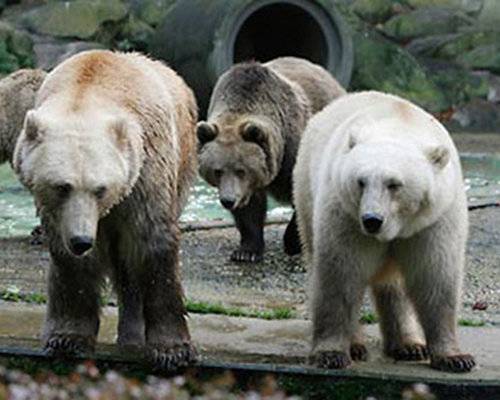Elizabeth Hadly: Mammalian Response to Climate Change

 |
Talk by Elizabeth Hadly, Stanford
Host – US Geological Survey |
 |
Mammalian Response to Climate Change: Past, Present, and Future
Animals have evolved in the face of environmental change. Extracting the responses of mammals to perturbations of the past is one of the best ways of unraveling how they will respond to perturbations of the future. Large environmental events such as the Pleistocene-Holocene transition provide unique opportunities for insights into resilience of mammals over time. The transition from the cold, arid Late Pleistocene (LP) glacial period to the warm, mesic Holocene interglacial witnessed the extinction of two-thirds of all the large-bodied mammalian genera (ground sloths, short-faced bears, giant wombats, etc.) and global expansion of modern humans.
The smaller mammalian survivors of the extinction (voles, gophers, ground squirrels, etc.) persisted but showed range changes, species turnover, and diversity decline. Subsequent but smaller climatic events, such as the Medieval Warm Period, continued to exert impacts on animals by causing adjustments in population abundances, body size and changes in genetic diversity.
This retrospective view yields predictions for Earth’s mammals of the future. We will certainly lose many species, while a few will thrive. Other species will abandon their former homes and occupy new areas. Surviving animals may decrease in size and otherwise change in appearance, behavior and/or genetic diversity. Although past climates exerted evolutionary pressures on mammals, the rate and magnitude of changes in the next century suggest perturbations too fast for present species to keep pace with, resulting in a world very different than it has been for perhaps millions of years.
Pictured below is just one of the species outcomes of climate change. Because the Arctic is warming, grizzly bears are moving further north and interbreeding with polar bears to produce “pizzly” or “grolar” bears. The sad side of this story is that these crossbreeds can end up ill-equipped to lead either life. They try to catch land prey by scooping in the way that polar bears successfully caught fish. But this behavioral adaptation no longer catches the food they need to survive.

Elizabeth Hadly holds the Achilles Endowed Chair as Professor of Biology at Stanford University and is also Professor of Geological and Environmental Sciences (by courtesy). She has worked to unravel the prehistory of modern ecosystems, communities, species and populations of mammals using fossil and modern data combined with genetic, isotopic, morphologic and geospatial approaches. Her research takes her to field sites in North, South and Central America and India that span the past million years to the present. She received her PhD in Integrative Biology from the University of California, Berkeley, her M.S. in Quaternary Studies from Northern Arizona University and her B.A. in Anthropology from the University of Colorado, Boulder. She has been a strong spokesperson for education about the impact of climate change on a range of mammal species. She has studied polar bears in the Arctic, seals, and pikas, focusing on what has caused extinctions and how animals have responded creatively (through adaptive evolution) to climate change. She has advocated an integrative approach to science and recently developed a new undergraduate course at Stanford integrating geology, evolution, ecology, and art. Hadly appreciates the importance of novel approaches in science and taught an integrative field and seminar course, Fusion of Science and Art: Along the Track of the Yellowstone Hotspot. Her commitment to communicate the urgency of climate change has led her to speak at a range of public venues, such as the California Academy of Science.
Bayesian Serial SimCoal
BayeSSC generates thousands of hypothetical trees using slightly different population parameters. Simulated genetics of the trees are compared to actual genetics of a user’s samples to investigate which of many simulated histories could have generated the samples. Mark Beaumont’s ABC method (Approximate Bayesian Computation) calculates average euclidean “distance” between simulated and observed genetic statistics for thousands of parameter combinations, approximating the error associated with each simulation
